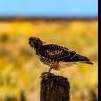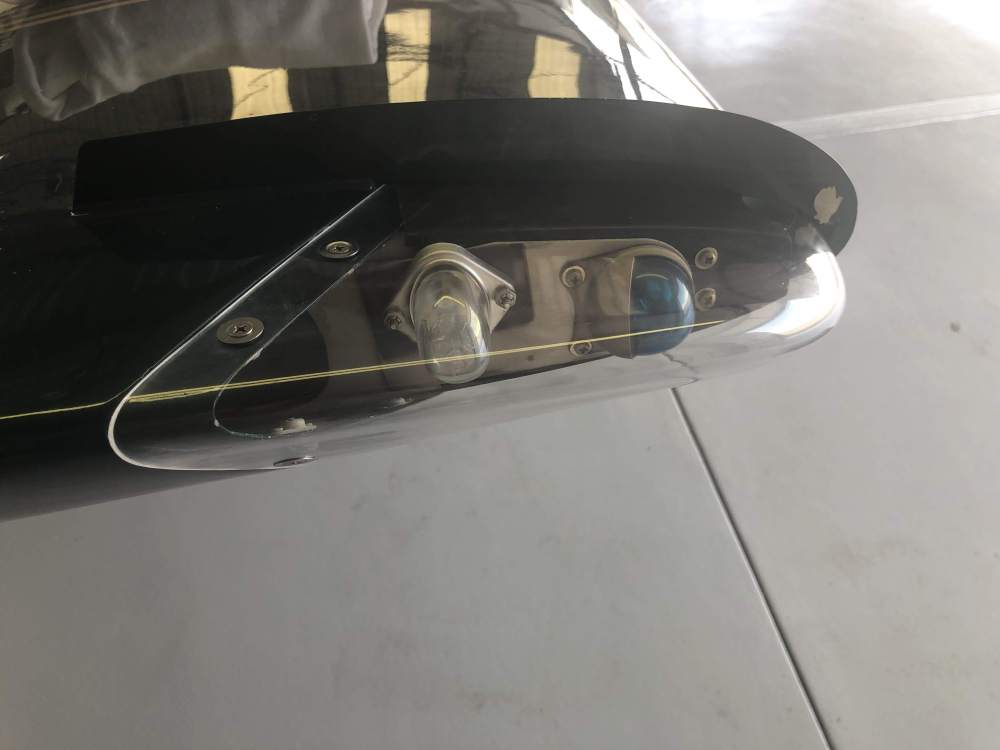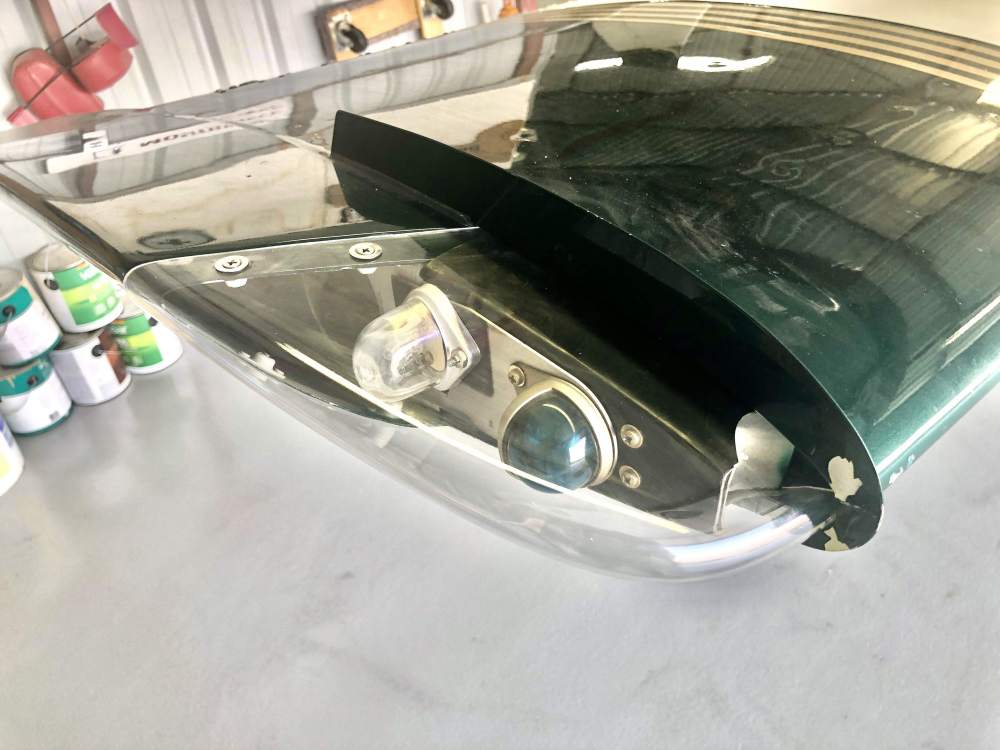-
Posts
184 -
Joined
-
Last visited
Content Type
Profiles
Forums
Blogs
Gallery
Downloads
Media Demo
Events
Store
Everything posted by flyer338
-
I am based at VGT, and I am considering Horton Aviation Services to resolve some problems with my electric trim, KFC-150 autopilot, and King HSI. I am considering an upgrade to electronic instruments to replace the HSI and AH. I would appreciate any feedback on Horton, Lone Mountain, or Apex at VGT by private message. Thank you,
-

Mooney M20J Down in Ohio 8/13/20 -- No Injuries
flyer338 replied to mooniac15u's topic in Mooney Safety & Accident Discussion
There is a lot of valuable discussion here about the off-airport landing. I am writing about the news photo that shows the accident plane sitting on the ramp with the tow bar attached to the nose gear. That made me cringe. I realize it has nothing to do with the off airport landings, but it makes me very uncomfortable. One inflexible rule I have is the tow bar is not attached to the nose gear unless it is also attached to my hand. -
My take away from this thread is that a composite three-blade propeller on a J model, with no change to cruise speed, offers 16 lbs of useful load, along with a shorter takeoff roll and better climb. How much does this miracle cost?
-
Cheryl and I flew from Las Vegas to Fortuna CA this morning for a week’s stay. The smoke and the baggage volume I will save for another post. My ‘83J was at gross weight, the pressure altitude was close to the field elevation of 2205’. The temperature was 91 degrees, and I calculated the density altitude to be 4833’. The ground roll was about 1300’. Time to 12,500 was 32 minutes. Density altitude was 15,560 and TAS 143 knots. The ground roll was 30% more at gross weight than for he previous flight where the weight was about 2475 lbs., albeit this flight started at 10% higher density altitude. I think that keeping a real world performance log for an individual airplane offers some advantages over time.
-
Our Mooney POH are deficient in data for take-off at high density altitudes. The lack of data does not mean the aircraft is not capable given the right technique. I am firmly convinced that using the runway available after lift off to gain speed while in ground effect is a game changer that works for Mooneys and other NA low wing airplanes.
-
-
My previous Mooney was a much modified 1965 C model and over more than a thousand hours in the plane, I came up with a rule of thumb and take-off technique for high density altitude departures. The rule of thumb was that at gross weight I needed a runway 2/3 of the density altitude in length. I think it was conservative, but it worked. The take-off technique was this: at 70 mph raise the nose wheel one inch, then accelerate in ground effect to 80 mph; at 80 mph raise the gear (this plane was converted to electric gear by Dugosh at 25 hours TT); at 90 mph raise the flaps, and climb out at 100mph. This worked well, but one must have a feel for the plane. Now, many years later, I have a J model, and we live in the western desert where the summers are hot. I am based at North Las Vegas. The temperature this time of year is 90 degrees at sunrise. The J model requires right at a 1,000’ to lift off at 2500 lbs under these conditions. I calculate the density altitude to be 4,650’. Other airports in the area are higher and still hot. I took my wife (her 2nd flight - she is doing well at becoming acclimated to Mooney flying) to look at a piece of property at Panguitch Lake, Utah. We landed about 0900 at Panguitch airport (6700’ field elevation and 5700’ runway with no obstructions). My plan was to be airborne again by noon or 1:00. We were light on fuel, and we are light as a couple, so our take-off weight was about 2350 lbs. The temperature when we departed was 88 degrees. That is beyond where the POH charts provide guidance for gross weight take offs. I calculated the density altitude as just over 9600’. I remembered the rule about 70% of take-off speed within 50% of the runway length. My plan was to raise the nose at 60 knots, remain in ground effect until 70 knots and raise the gear, raise the flaps at 80 knots, and climb out at 90 knots (Vy+). It worked perfectly. We lifted off in 1500’ and were at 90 knots within 5000’. On climb out I needed 100 kias to keep the CHT at 380 degrees or below. But we still were able to climb at 500 fpm. When planning this departure I considered the rate of climb I had so far experienced in this plane at heavier weights and at density altitudes as high as 18000’. I am interested in others’ experiences with high density altitude departures in normally aspirated Mooneys.
-
I had my pre-buy done at a well known MSC and rolled it into an annual. I think they missed many things, especially regarding avionics function. The most egregious miss was the lack of a compass correction card - not a big deal, but definitely an airworthiness item. I am not bashing them. I think the problem is a lack of skilled technicians. I am familiar with a very good FBO in a remote area of California. I have known the owner, who is also the only A&P/IA there, for 30 years. He is both competent and honest. But he cannot find an A&P to hire. He is at or near retirement age. When he goes, I fear for that aviation community.
-
I hired Don Kaye to bring me current in my newly purchased J model a year ago. I had not flown in more than eight years. Don is an outstanding instructor. He specializes in Mooney instruction and flys a TLS Bravo. The downside for you is that he is on the opposite end of the continent; he is based at Palo Alto, CA. Don is a list member here.
-
Wingtip lens installed. I used a bench grinder to shape and fit he lens. The only material removed was from the rear edges. I worked slowly and carefully. It took about three hours. I used the three drill bits sold by Knots2U - after spending $320 for the lens and three hours fitting it, I was not taking any chances when drilling the screw holes.
-
In 25 years of flying, this is the first wingtip damage I have had to repair. I hope it will be another 25 years before it happens again, and by then I suspect flying will be a pleasant memory. Karma being what it is, I should probably delete his reply.
-
I think it is a candidate for an OPP, but to do so is beyond my current skill level. The infrastructure investment to produce one part seems like it might be more than the market price of the part. I do not expect to need another right wingtip lens in my lifetime. I would happily purchase the LASAR product, but it was not available in time for a planned trip. Making the trip with a repaired lens does not tempt me.
-
I saw the lens for sale on eBay. The delivery time was not soon enough. I need it by 8/22 in order to leave for a week long trip. I gasped at he price, but on the other hand, just being able to get a part for an orphaned airplane is something.
-
This is a little tangential to his thread. IO360 and O360 Lycoming engines lubricate the cam with oil that flys off of the crankshaft. My research and reading is that 1000 rpm are required to ensure sufficient lubrication for the cam lobes. There is probably no way to know how the engine has been run, but it is something to consider going forward. My former Mooney (1965 M20C) sat in a hanger unflown for three years before I sold it. There were 1500 hours on a factory reman engine when I sold it in 2014. I am in touch with a the current owner; it went to Florida and now lives n Allentown NJ. It is flown regularly and the engine is doing fine.
-
I recently needed a right hand wingtip lens for my 201. None of the Mooney service centers I contacted had any. LASAR quoted $149, but none expected until next month. The MSC in Florida’s put me n touch with Great Lakes Aero; they make them for Mooney, but none in stock. Chandler aviation put me on to Knots2U. They stock the part and mine should arrive tomorrow. The price with shipping is about $320. I suspect the next batch at LASAR will be a little more expensive.
-

Long body Actual glide with an engine out?
flyer338 replied to Schllc's topic in Mooney Safety & Accident Discussion
I completely agree. But if one has choices . . . -

Long body Actual glide with an engine out?
flyer338 replied to Schllc's topic in Mooney Safety & Accident Discussion
I do not claim to have done an exhaustive study, but from what I read in Kathryn’s Report and elsewhere, most engine outs are due to fuel problems, next are ignition problems, and problems that stop the engine from turning are a distant third. While a hard engine stoppage will stop the pilot from adjusting the propeller pitch, the stopped propeller reduces drag even more than a propeller in max pitch. I know from experience the propeller pitch can be controlled in flight even with the engine shut down (4 cyl. Lycoming). -

Long body Actual glide with an engine out?
flyer338 replied to Schllc's topic in Mooney Safety & Accident Discussion
On the flight back to North Las Vegas from Panguitch Utah yesterday, the route took us south of Cedar Breaks and north of Zion. I was not only paying attention to flat ground but also to flat ground with road access. There were only about 15 minutes or so after leaving the highway 89 corridor until we could see the flat ground around Hurricane Utah. The wind was about 20 knots off of the nose at 10500, so I was prepared to turn around if there was a problem. Flat ground on the top of a Mesa in a wilderness area would not have been my preference. -

Long body Actual glide with an engine out?
flyer338 replied to Schllc's topic in Mooney Safety & Accident Discussion
I did not see it mentioned in this thread, so far. If you pull the propeller knob to max pitch and close the throttle (once you have decided there will not be a restart) the glide ratio will improve by as much as 20%. Try it. -
I looked up Wife Approved LLC at the California Secretary of State’s business portal. The agent for service of process is Jeff Wachner. I looked Jeff Wachner up in the FAA airman database. There is a Jeffrey Alan Wachner of Redondo Beach, Ca in Los Angeles County. Mr. Wachner is listed as having a commercial pilot’s certificate: single, multi, and instrument. If he was acting as PIC during the incursion, one would expect him to be sufficiently experienced so as to avoid unintentionally entering bravo airspace. I did not see anything to show whether there has been a certificate action. https://amsrvs.registry.faa.gov/airmeninquiry/Main.aspx I agree with prior posters that his incursion was intentional, and from my perspective the act of a scofflaw. There is no place for such in aviation. I am based at North Las Vegas, and so far I have found Nellis approach accommodating with clearance through bravo airspace. Yesterday, returning from Panguitch Utah, we were cleared into bravo, although we suffered some delay in landing due to the vectors necessary to keep us clear of a west bound heavy departing Nellis. I recognize a certain anti-authority streak in myself, but it goes into remission when I fly. I never considered challenging the Nellis controller - he was trying to keep my Mooney (small bug) from being eaten by an Air Force heavy (big bug). In short he was doing what was best for all concerned. The result was that I got to fly a few minutes longer. I fly because I like flying, and had no urgent need to be on the ground. I think I recognized the voice of the LA controller, and I talked to her yesterday before she handed me off to Nellis. She was polite, correct, and professional. That has been my experience with Nellis and KVGT as well. I recall a time long ago (1996) when I was landing my previous Mooney at Washington National. The controller gave me a 360 on final for spacing to accommodate a Delta jet on the river visual approach. The turn put us right over the Pentagon at 600 feet; I do not think that will happen again.
-
Great books. All four are sitting on my bookshelf.
-

Six turnin, four burnin....
flyer338 replied to ragedracer1977's topic in Miscellaneous Aviation Talk
The Air Force Museum at Wright Patterson is not to be missed. In addition to a B-36, they have a B-58, and the B-29 that dropped the atomic bomb on Nagasaki. Their most magnificent display is the remaining B-70 Valkyrie. The Castle AFB museum at Atwater, CA has a B-36, and on Memorial Day weekend they have open cockpit day. It is worth a trip if one is nearby. -

Who does not have a CO monitor?
flyer338 replied to Ross Taylor's topic in Miscellaneous Aviation Talk
I did not have CO monitor in my first Mooney. This time around, I had a CO detector, an O2 bottle, and a pulse oxymeter before the first flight. I bought the TOCSIN 3 CO monitor from Sporty’s. It seems to be very sensitive. I am happy to report that it reads zero in cruise, even with the heater on. -
I am not sure how to begin this missive. I will say that from the beginning all involved believe we had a fuel problem. That turns out not to have been the case. I cannot fault the A&P IA involved, and I credit him with identifying the solution. The problem was an intermittent failure of electronic ignition pick-up that replaced the right magneto. The failure only happened when the pick up was hot, and then only intermittently. Any intermittent problem is difficult to diagnose. The good news is that intermittent problems invariably get worse, and that helps in pinning them down. A major obstacle in isolating the problem is that I was not doing the mag checks properly, and I did not isolate the electronic ignition as the source of the failure as soon as possible. I am happy today that my plane is flying, I have confidence in the EIS-4100 electronic ignition, and I better understand and believe in the importance of knowing all of the systems cold.
-
It is time to update this thread - I am flying again, and as of three days ago my Mooney is at home in its new hangar after a four hour flight across the sierras. I will provide the details in another post. Part of the delay is that I was sick for two months, and there is no one in Eureka, CA qualified to test fly a M20J.





